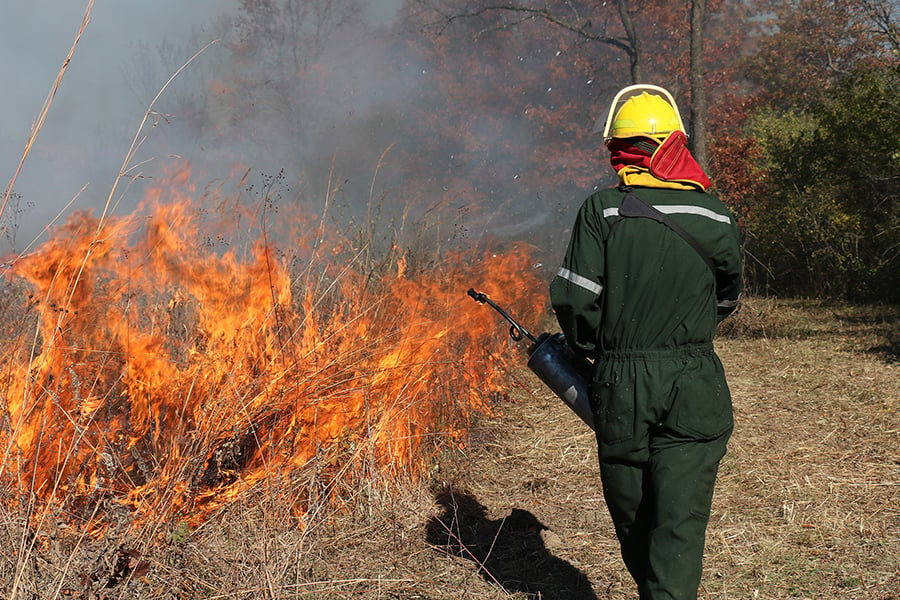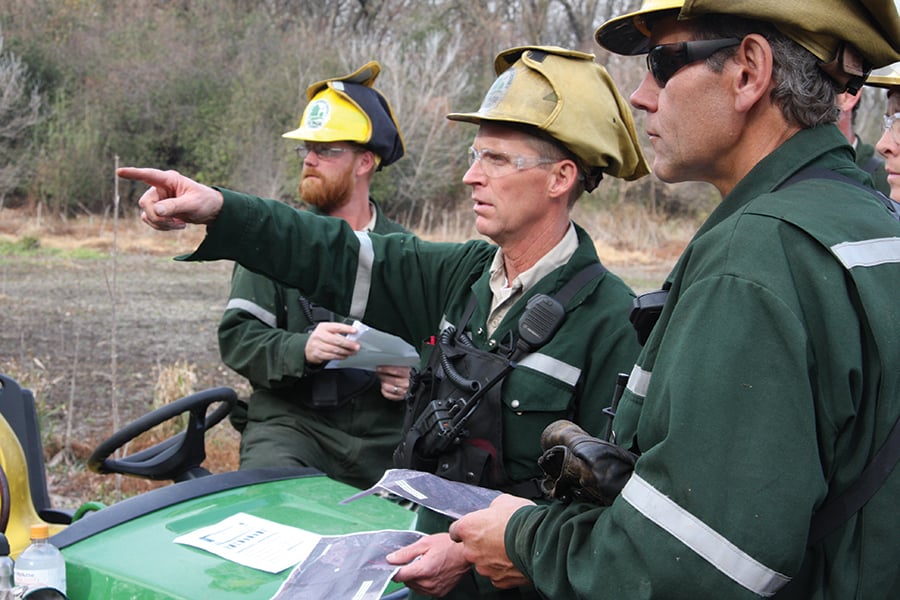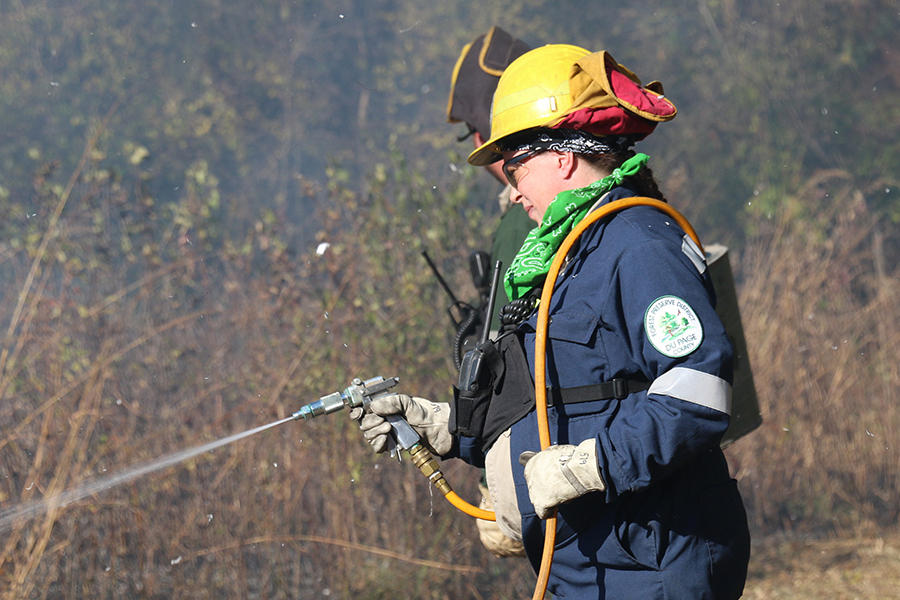Prescription Burns
Prescription burns are carefully set fires that trained Forest Preserve District employees use in late fall and early spring to remove invasive plants and improve conditions for native species.
Why Fire?
-
It turns dried plants into ash, which allows nutrients locked inside the plants to quickly reenter the soil and fertilize new growth in the spring.
-
It prevents dead grasses and leaves from piling up. Too much accumulated plant “litter” can lower the temperature of the soil, which makes it harder for seeds and sprouts to develop.
-
It kills or stunts nonnative shrubs such as buckthorn and honeysuckle. These plants have only been in the area for a century or two and can’t bounce back after fires as easily as native species, which have developed deeper roots or thicker bark.
What's the "Prescription"?
The “prescription” is two sets of directives. The first outlines the site’s overall management plan. Ecologists use observations and data to determine what’s growing at a site and which tools — fire, mowing, brush cutting, herbicides, etc. — can improve the density and variety of native species. Ecologists may decide to use fire if:
- They’ve cut invasive buckthorn and honeysuckle but are seeing new sprouts, which fire can knock back.
- They’ve applied herbicides to invasive plants and burning the dead vegetation will expose the soil and allow the dormant invasive seeds to germinate so that a second more exhaustive treatment can be applied prior to putting in native seed.
- There’s a mix of native and invasive grasses and burning will clear the entire site and allow them to better target and eliminate invasives as they sprout in the spring.
The second is a safety plan that dictates if a burn is a go on a particular morning.
- What’s the humidity? Is there rain in the forecast? Moisture on the plants will make it difficult to burn.
- What’s the wind speed and direction? If there’s a busy road east of the site, the Forest Preserve District can’t burn if winds are out of the west.
- Are there specific native plants or animals present and will the prescription keep them safe?
- Are the prescribed number of trained fire crew members required to safely conduct the burn available?
- Are all firebreaks prepared?
- Is equipment to safely conduct the burn available?



What Happens Before the Season?
After selecting sites and outlining the prescriptions, the Forest Preserve District applies for burning permits from the Illinois Environmental Protection Agency and, if needed, local fire departments. It also mails postcards to people who live within 1,000 feet of each burn site. (Depending on the size, a forest preserve can have more than one burn site.) Residents with health conditions that smoke can aggravate can request calls the morning of the burn.
What Happens the Day of a Burn?
In the morning the Forest Preserve District reviews site prescriptions and determines which, if any, it can burn that day. If a burn is a go, it notifies local fire departments and the DuPage County sheriff’s office and calls residents who received postcards and requested calls. Once the burn begins:
- Employees post signs at entrances and along trails to ensure visitors remain at safe distances.
- Employees follow strict protocols on lighting, controlling and monitoring each fire.
- The Forest Preserve District remains in touch with fire departments.
- Crews remain on-site after the fire burns out to look for flare ups. At prairies and wetlands, they may stay for an hour; in woodlands they may need to remain for several.
Video Gallery